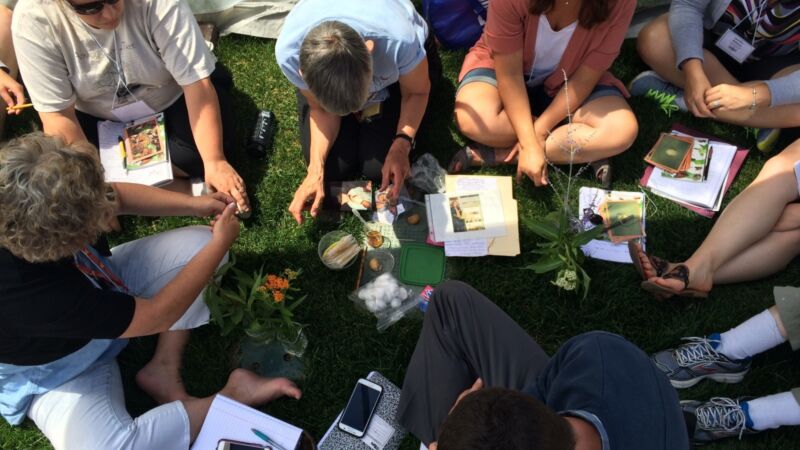
Why monarchs? While monarchs are intrinsically important, conserving monarchs matters for more than just their own protection. We’re exploring the ways that monarch habitat and conservation help people, other wildlife and the environment in this ‘More than Monarchs’ series! Join us to learn more.
Education is a hugely important piece of conservation, no matter what the species. People need to know first that there is a problem, and then, second, what they can do to help.
Monarchs are fantastic subjects both to study and to engage others in conservation. They are an extremely charismatic organism and nearly everyone has something to share about monarchs. Whether it’s an encounter they had as a child, something they heard about as an adult, or something in between, monarchs can interest people of all ages! They are a great connection to nature and a reminder that we are just one small part of this incredible planet. Monarchs are a gateway to all the natural wonders of the world.
As an engagement tool, monarchs are an easy pitch. They are beautiful and interesting, so people want to learn more. They are also relatively easy to observe in most places and a wonderful tool to teach about insect life cycles and the connectivity of our natural world. Because people love them and want to help them, they are concerned about the monarch’s decline and want to take action. There are many existing tools for educators who want to engage people in monarch conservation.
Planting habitat is the best thing anyone can do to help monarchs. And since monarchs share habitat with so many other organisms, by planting more habitat we are helping countless other creatures such as other pollinators, birds, reptiles, amphibians, plants and more.
The biology and ecology of monarchs are interesting topics and there are still many things we don’t understand. Active research is being done to inform monarch conservation, and researchers need our help. This is a great junction at which anyone can be engaged. Citizen and community science programs for monarchs have already taught us so much about this amazing insect, but we’ve still got a lot to learn. Monitoring for monarchs not only helps us learn more about them, but it is also a gateway to teach about and involve others in conservation. Citizen science can also inspire a person to dig deeper into something new they observe or to take further action in conservation.
Monarch conservation education is just one example of how the work we do for monarchs can make a difference in many ways. What are the co-benefits of monarch conservation that matter most to you? Keep following our More than Monarchs series to hear more stories of what monarchs can do for us, our communities and our world.
The Monarch Joint Venture is a national partnership of federal and state agencies, non-governmental organizations, businesses and academic programs working together to conserve the monarch butterfly migration. The content in this article does not necessarily reflect the positions of all Monarch Joint Venture partners. Article contributed by Katie-Lyn Puffer, Monarch Joint Venture, for the Monarch Joint Venture Communications Working Group and NAPPC Monarch Taskforce. Header photo by Katie-Lyn Puffer.
